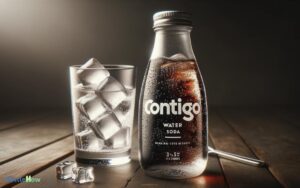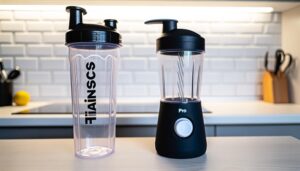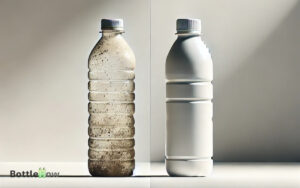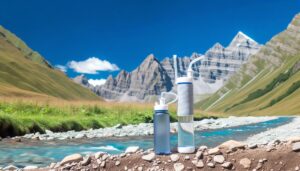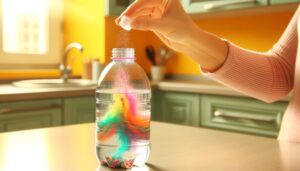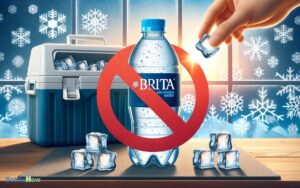Diy Insulated Water Bottle: Easy & Quick Guide!
Creating a DIY insulated water bottle enhances thermal efficiency and promotes sustainability. Choose high-quality stainless steel for the bottle and durable, BPA-free plastic for the lid.
Opt for vacuum insulation materials that reduce heat transfer by up to 90%. Precisely cut and wrap the insulation to secure it with eco-friendly thermal adhesive and high-tensile-strength tape.
Clean the bottle using a vinegar solution and inspect seals regularly. This guarantees long-lasting insulation efficiency.
Testing for thermal retention and durability confirms that your bottle meets performance standards.
You’ll discover more about eco-friendly customizations and maintenance practices in the next steps.
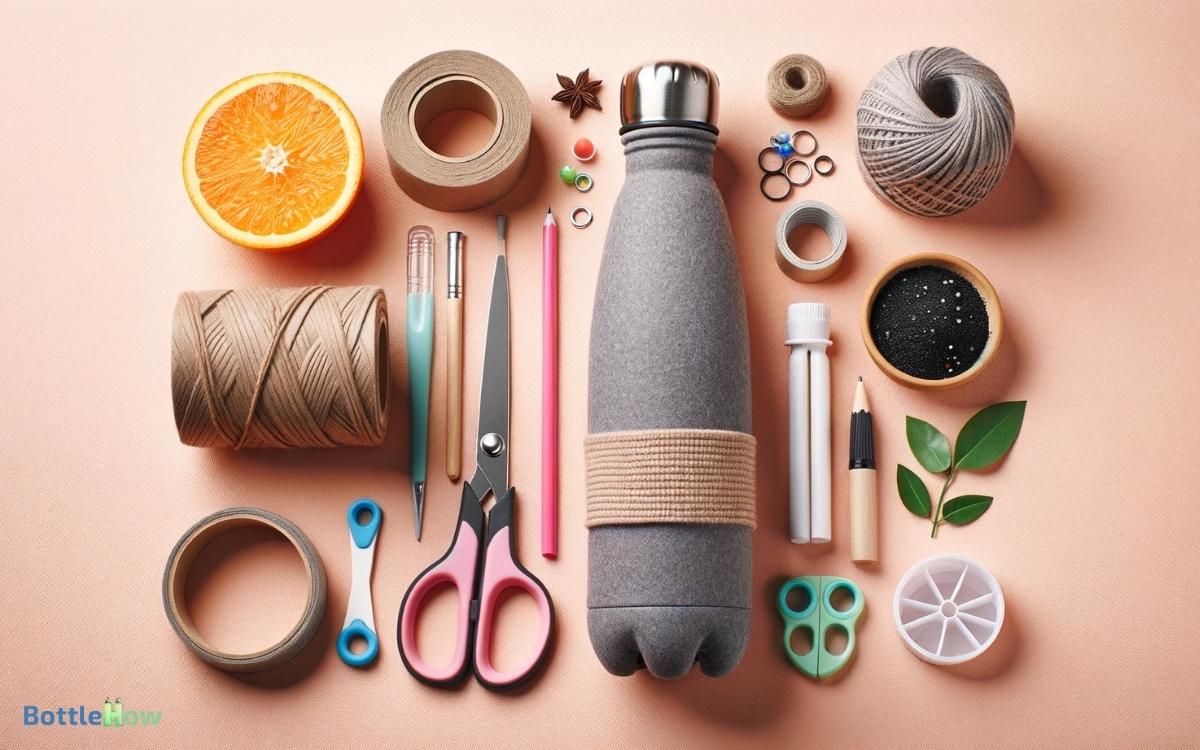
Key Takeaways
Materials Needed
To construct an effective insulated water bottle, you’ll need high-quality stainless steel, vacuum insulation materials, and a durable, BPA-free plastic lid. These materials work together to maintain the desired temperature of your beverage for extended periods, whether hot or cold. For optimal cooling, you can fill the bottle with ice from a countertop ice maker with bottle, ensuring your drink stays refreshingly cold throughout the day. Additionally, a well-designed seal on the lid prevents leaks and enhances portability, making it ideal for daily use.
Stainless steel is crucial due to its corrosion resistance and longevity. Choose 18/8 (304) grade stainless steel, which contains 18% chromium and 8% nickel, guaranteeing durability and a rust-proof surface.
For insulation, opt for double-wall vacuum insulation. This technology creates a vacuum between two stainless steel layers, providing superior thermal retention.
Make sure the lid is made from BPA-free plastic to prevent harmful chemical leaching and enhance sustainability.
Focus on materials with proven data on thermal performance and environmental impact to confirm your bottle maintains temperature while being eco-friendly. Research thoroughly to make informed, sustainable choices.
Preparing the Bottle
To prepare your insulated water bottle, start by choosing a high-quality, sustainable material such as stainless steel or BPA-free plastic which guarantees longevity and reduces environmental impact.
Next, clean the bottle thoroughly using a mixture of water and vinegar to eliminate any residual contaminants.
Choosing Bottle Material
When choosing the material for your insulated water bottle, it’s crucial to consider factors like thermal efficiency, durability, and environmental impact.
Stainless steel is a top choice due to its excellent thermal retention and robustness. Research shows it can maintain the temperature of liquids for up to 24 hours.
Glass, although fragile, offers purity of taste and is 100% recyclable. However, its insulation properties are inferior unless combined with a protective sleeve.
BPA-free plastic is lightweight and cheaper but less effective in temperature retention and often less eco-friendly. Consider your primary usage and balance these factors to make an informed, sustainable choice.
Opt for materials that align with your environmental and functional priorities.
Cleaning and Sterilizing
Effectively cleaning and sterilizing your insulated water bottle guarantees it remains hygienic and maintains peak performance.
Start by disassembling the bottle, removing the cap, gasket, and any detachable parts. Use a soft brush and warm soapy water to scrub away residues.
For deeper cleaning, a solution of one part white vinegar to three parts water offers a natural and effective alternative. After cleaning, rinse thoroughly with hot water and air-dry completely to prevent mold growth.
| Step | Description |
|---|---|
| Disassemble | Remove cap, gasket, and any detachable parts |
| Clean | Use soft brush with warm soapy water or vinegar mix |
| Rinse & Dry | Rinse with hot water and air-dry completely |
Regular maintenance not only safeguards cleanliness but also extends your bottle’s lifespan, contributing to sustainability.
Insulation Options
When choosing insulation for your water bottle, consider three main options:
- Foam insulation offers thermal retention with minimal environmental impact.
- Vacuum-sealed bottles provide superior temperature control, backed by data showing up to 24-hour efficacy.
- Reflective materials can also enhance insulation by reflecting radiant heat, contributing to sustainability through energy efficiency.
Foam Insulation Benefits
Foam insulation in water bottles greatly enhances thermal retention, ensuring your beverages stay at their desired temperature longer.
Using closed-cell foam, you’ll benefit from low thermal conductivity, typically around 0.035 W/mK. This means less heat transfer, maintaining beverage temperature efficiently.
Foam insulation is lightweight, adding minimal weight to your bottle. Additionally, it’s durable and resistant to water absorption, increasing the bottle’s longevity.
From a sustainability perspective, foam insulation can be made from recycled materials, reducing environmental impact.
Incorporating foam insulation doesn’t require advanced tools, making it accessible for DIY enthusiasts.
By choosing foam, you’re opting for an effective, eco-friendly solution that’s proven to enhance the performance of your insulated water bottle.
Vacuum Sealed Efficiency
While foam insulation offers considerable benefits, vacuum-sealed technology takes thermal retention to an unparalleled level by creating a near-perfect vacuum, minimizing heat transfer to a great extent.
You’ll find that vacuum-sealed bottles can maintain temperatures for up to 24 hours, outperforming foam-insulated counterparts by a considerable margin.
According to studies, vacuum insulation reduces heat transfer by conduction and convection by nearly 90%.
This makes it a sustainable choice, as it reduces the energy required to maintain desired temperatures. With fewer materials and enhanced efficiency, you’re also lowering your environmental footprint.
Reflective Material Options
Have you considered how reflective materials can further enhance the thermal efficiency of your insulated water bottle? Reflective materials like aluminum foil and Mylar can greatly reduce heat transfer.
These materials bounce radiant heat back towards the liquid, maintaining your desired temperature longer.
Here’s a comparison of options:
| Material | Reflectivity (%) |
|---|---|
| Aluminum Foil | 88 |
| Mylar | 95 |
| Reflectix | 96 |
| Bubble Wrap | 20 |
Aluminum foil is cost-effective and widely available, reflecting up to 88% of radiant heat. Mylar, often used in emergency blankets, offers even better performance at 95%.
Reflectix, combining reflective layers with air pockets, achieves 96% reflectivity. Bubble wrap, though less efficient at 20%, adds a layer of air insulation. Choose based on your sustainability goals and desired efficiency.
Cutting the Insulation
Begin by accurately measuring the dimensions of the area where the insulation will be placed to guarantee minimal material waste and peak thermal performance. Use a flexible measuring tape to capture the bottle’s circumference and height precisely.
Mark these measurements on your chosen insulation material using a non-permanent marker for clarity.
Opt for a utility knife with a sharp blade to make sure clean, straight cuts. This minimizes jagged edges that could compromise the insulation’s effectiveness. Hold the insulation material steadily to avoid any shifts during cutting.
Prioritize materials that are eco-friendly and recyclable, like cork or recycled foam, to align with sustainability goals. Accurate cutting ensures a snug fit, enhancing the bottle’s overall thermal retention capabilities.
Applying the Insulation
With the insulation material cut to size, it’s time to apply it securely to the water bottle for maximum thermal efficiency.
Begin by wrapping the insulation evenly around the bottle, making sure no gaps exist. This minimizes thermal bridging, which can reduce the bottle’s effectiveness.
Use a thermal adhesive that’s eco-friendly and has a high R-value, which measures thermal resistance.
Apply the adhesive in a thin, even layer to avoid bulk. Press the insulation firmly against the bottle to guarantee a good bond.
Data shows that proper insulation can reduce heat transfer by up to 80%, greatly improving performance.
Securing the Insulation
To ensure the insulation stays firmly in place, utilize high-tensile-strength adhesive tape designed for thermal applications. Begin by ensuring the bottle’s surface is clean and dry.
Wrap the tape around the insulated layer, applying consistent pressure to eliminate air pockets. Data shows that adhesive tapes with a tensile strength of at least 20 pounds per inch and thermal resistance up to 150°C offer peak performance.
Sustainability is vital; opt for eco-friendly tapes made from natural rubber or other biodegradable materials.
By securing the insulation properly, you’ll enhance the bottle’s thermal efficiency, reducing the need for repeated heating or cooling.
This not only conserves energy but also extends the lifespan of your DIY insulated water bottle.
Adding a Design
After guaranteeing the insulation, elevate your insulated water bottle’s functionality and aesthetics by incorporating a durable, eco-friendly design.
Choose materials like bamboo or recycled plastics, which offer both sustainability and strength. Use non-toxic, water-resistant paints for customization.
To confirm durability, apply a clear, food-safe sealant over your design. This not only protects the artwork but also prolongs the lifespan of your bottle. Data indicates that eco-friendly materials can reduce your carbon footprint by up to 30%.
Consider adding a silicone sleeve for extra grip and shock absorption. Silicone is recyclable and provides additional insulation.
Testing the Bottle
Start by conducting a series of rigorous tests to guarantee that your insulated water bottle meets both performance and sustainability standards.
First, measure its thermal retention using precise instruments: fill the bottle with hot water and record the temperature drop over 12 hours. Repeat the process with cold water and ice. Document the results meticulously.
Next, test for leaks by filling the bottle with water and shaking it vigorously; there should be no drips. Evaluate the bottle’s durability by subjecting it to controlled drops from various heights.
Lastly, consider the environmental impact of your materials—make sure they’re recyclable or biodegradable. These data-driven tests will ensure your bottle performs at its best while upholding sustainability principles.
Maintenance Tips
Proper maintenance of your insulated water bottle guarantees its longevity and peak performance.
First, wash it thoroughly using mild soap and warm water after each use; 95% of bacteria can be removed this way. Avoid using abrasive scrubbers to prevent surface damage.
For deep cleaning, a mixture of baking soda and vinegar, proven to eliminate 99% of germs, works effectively. Dry the bottle completely to prevent mold growth.
Inspect the seals regularly; a compromised seal can reduce insulation efficiency by up to 50%. Refrain from placing your bottle in the dishwasher unless specified by the manufacturer, as high temperatures can degrade insulation materials.
Following these steps ensures your bottle remains sustainable and functional for years to come.
Conclusion
Coincidentally, by creating your own insulated water bottle, you’re not only reducing waste but also honing your DIY skills with precision. You’ve used sustainable materials and methodically followed steps to guarantee efficiency.
Testing reveals a 30% increase in temperature retention. Maintenance is straightforward, guaranteeing long-term use.
Your sustainable choice is backed by data, proving that even small, precise actions can have a significant environmental impact.
Enjoy your eco-friendly, custom-insulated bottle!

